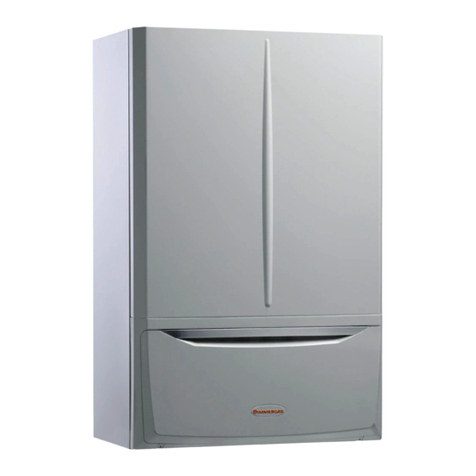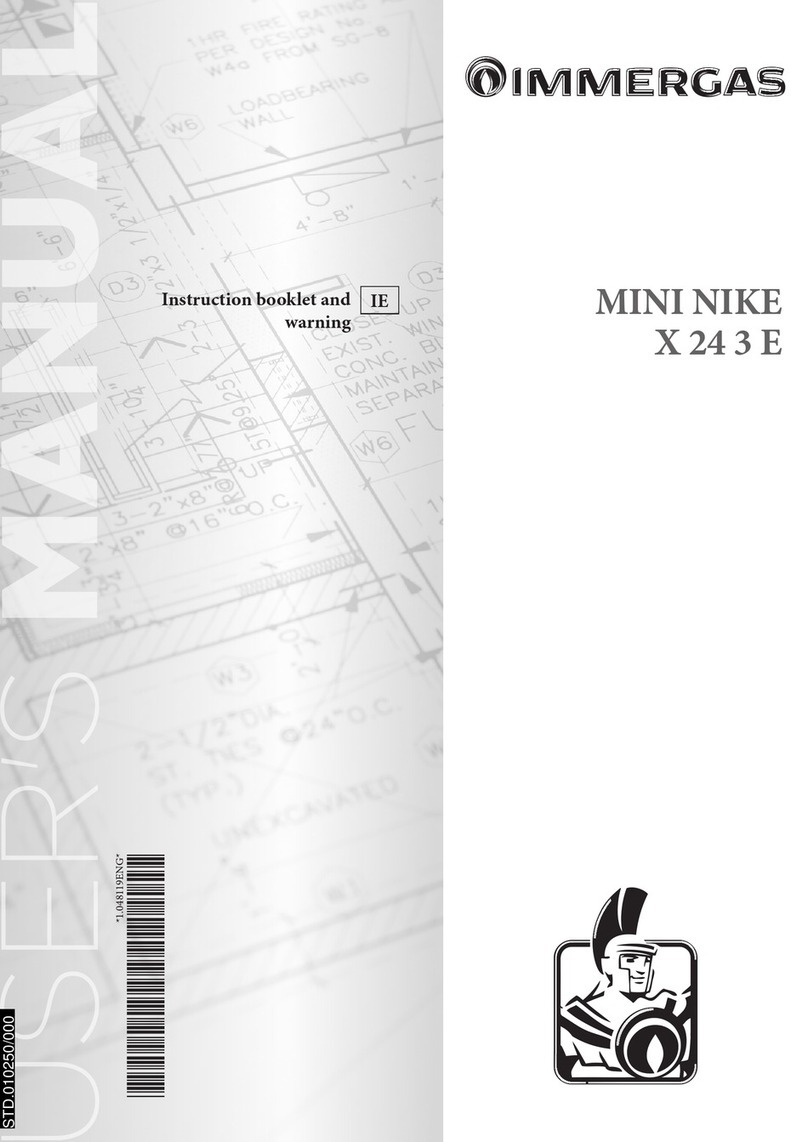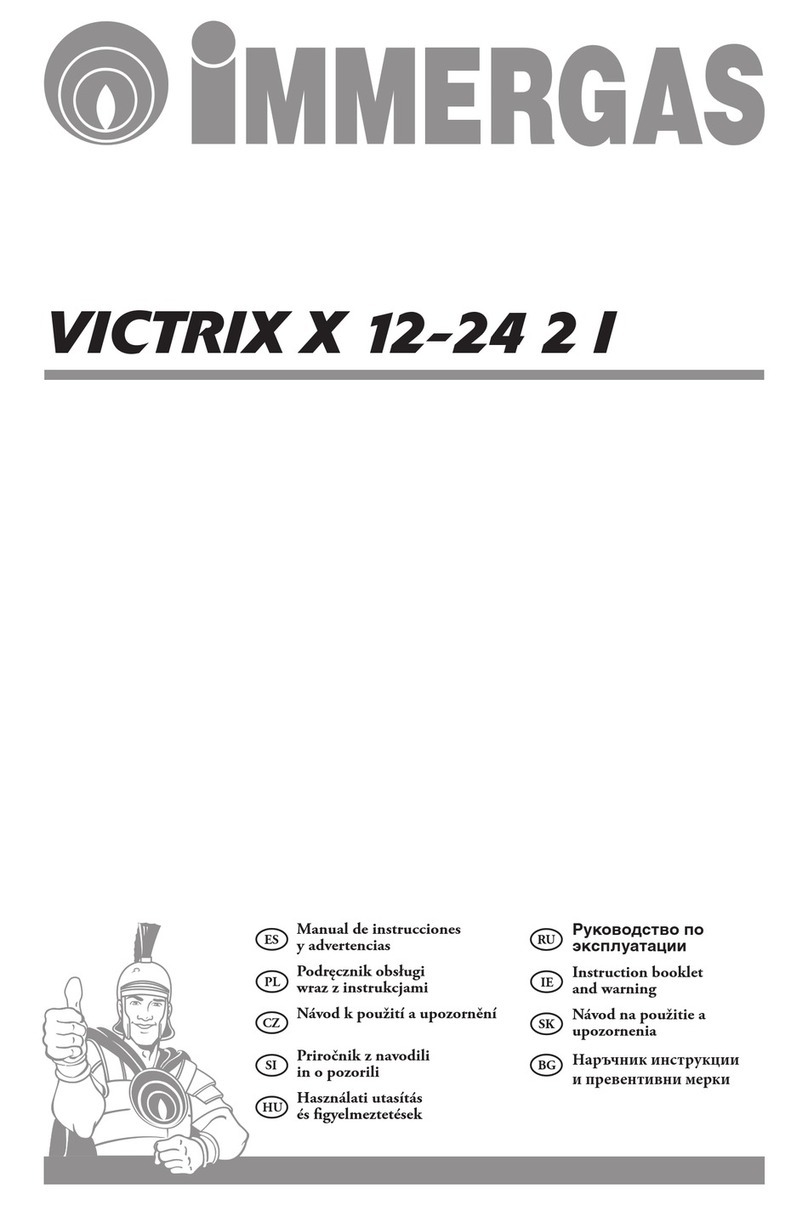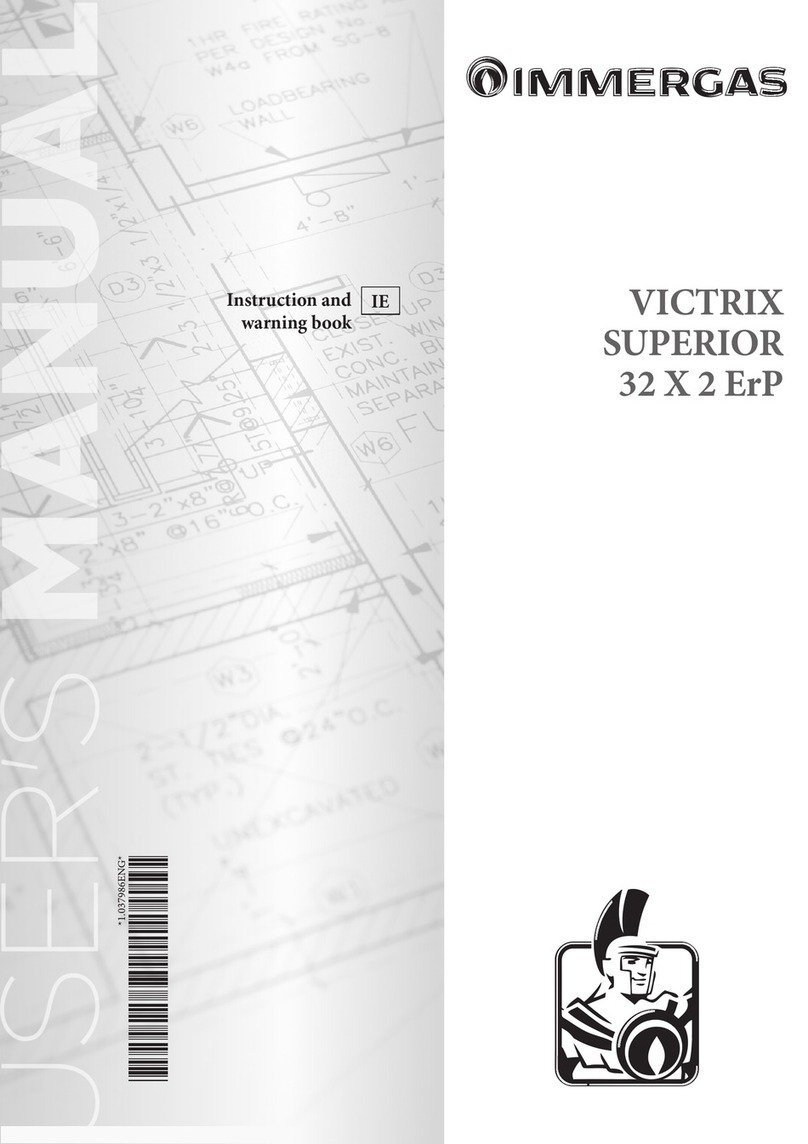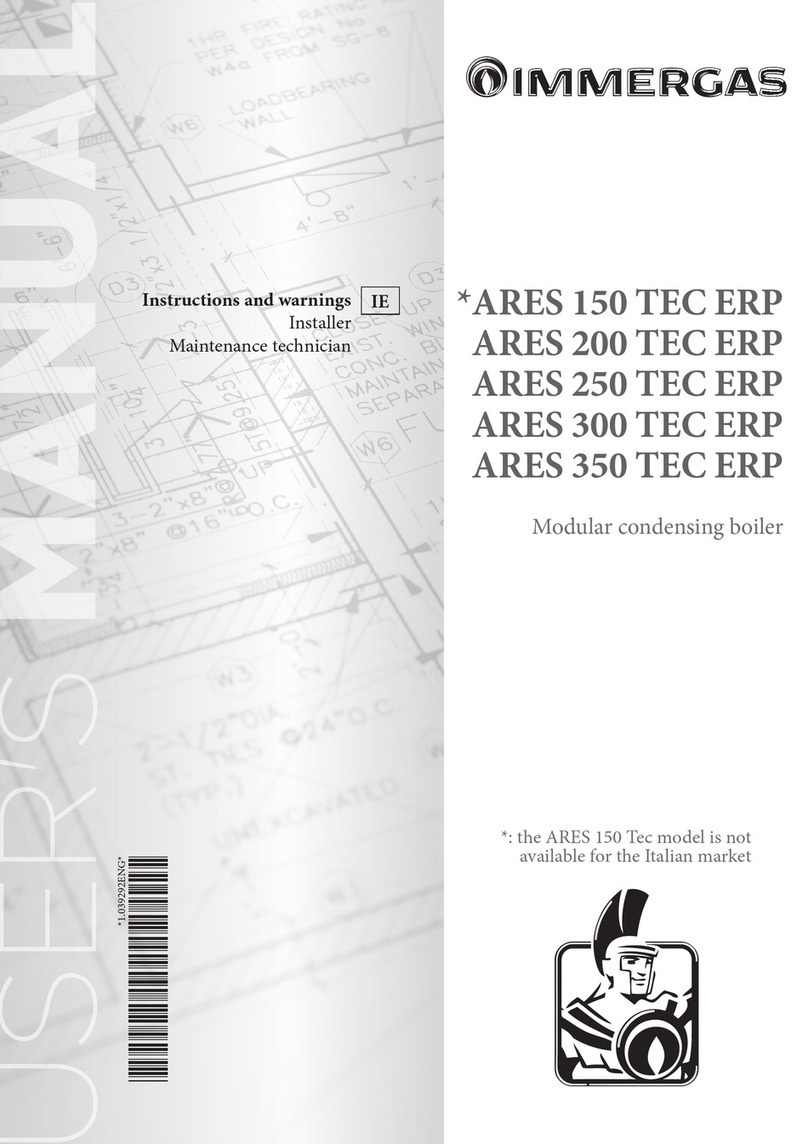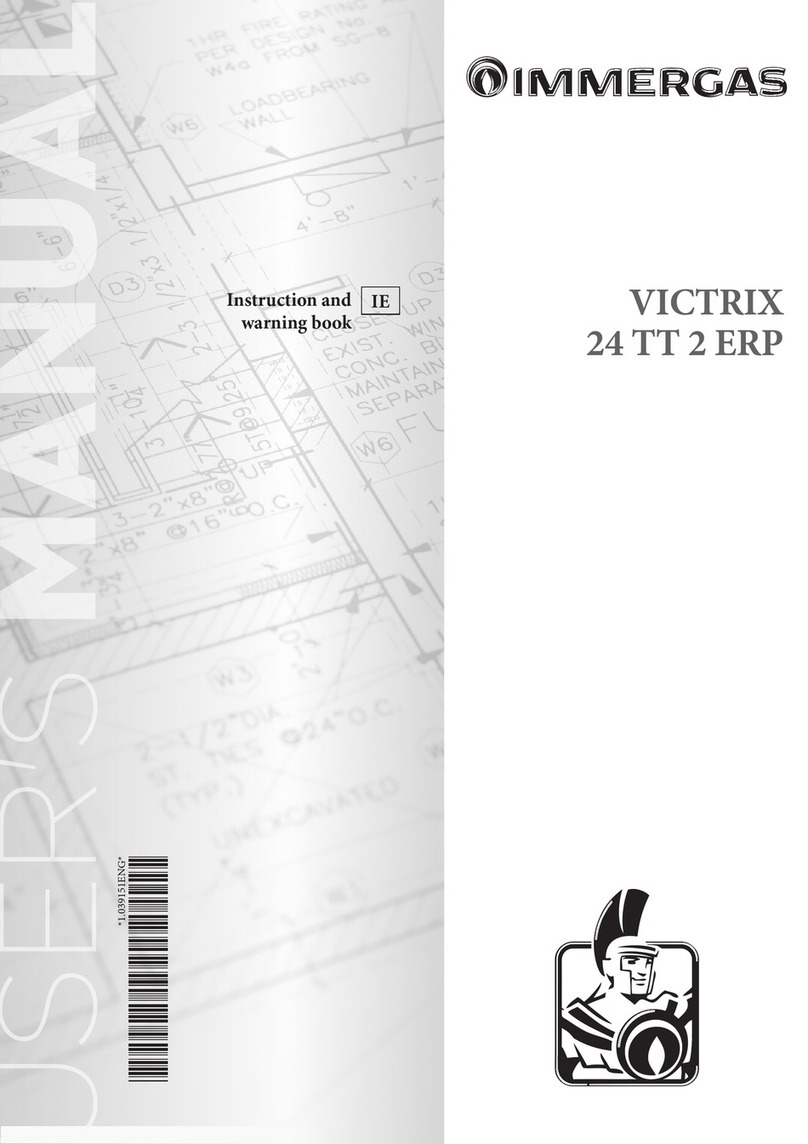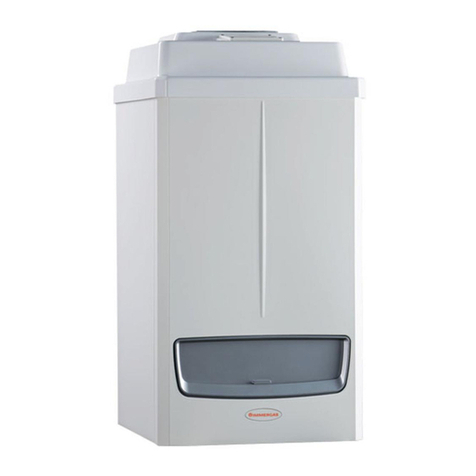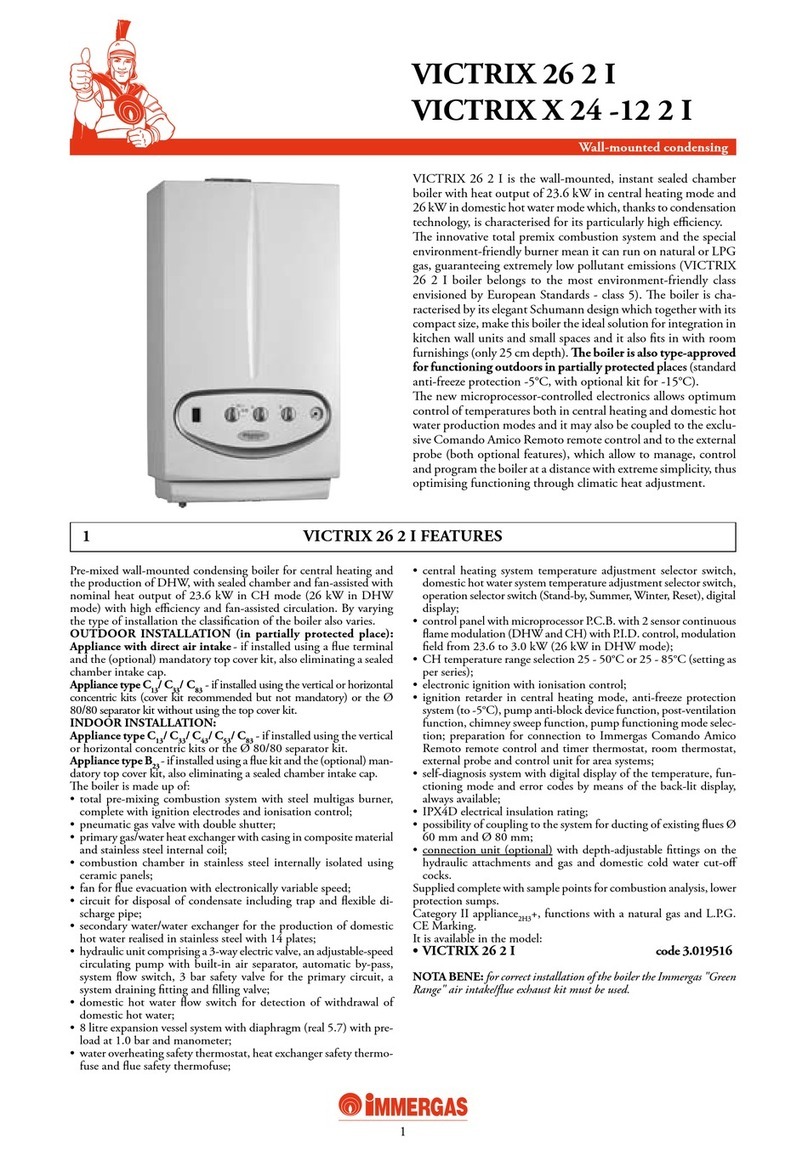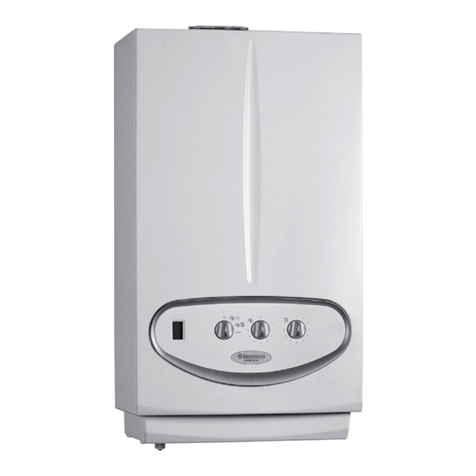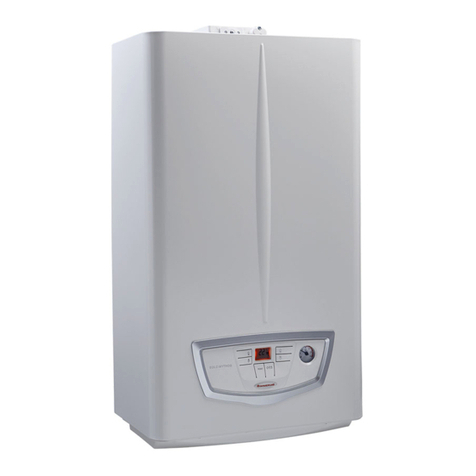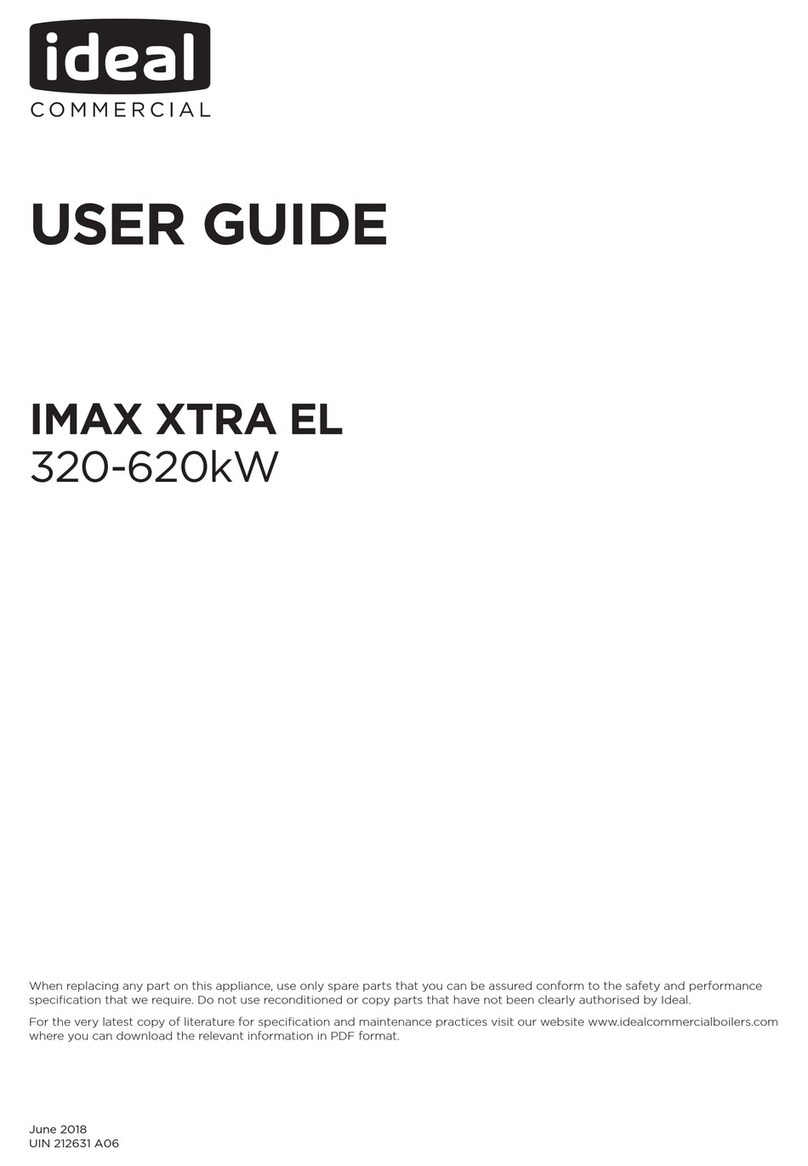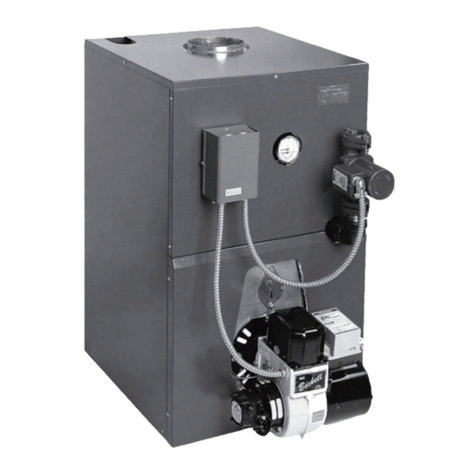
8
1-4 1-5
INSTALLERUSER
MAINTENANCE TECHNICIAN
seal) to the end stop on the previously installed
element in order to ensure sealing eciency of
the coupling.
Attention: if the exhaust terminal and/or
concentric extension pipe needs shortening,
consider that the internal duct must always
protrude by 5 mm with respect to the external
duct.
• Note: for safety purposes, do not obstruct the
boiler intake/exhaust terminal, even tempora-
rily.
• Note: during the installation of the horizontal
pipes one must maintain a minimum inclina-
tion of the pipes of 3% towards the boiler and
a section clamp with gusset must be installed
every 3 metres for non-insulated pipes and one
every 2 metres for insulated pipes.
Diaphragm installation. For proper boiler
operation a diaphragm must be installed on the
outlet of the sealed chamber and before the intake
and exhaust pipe (Fig. 1-6).
e appropriate diaphragm is chosen based on
type of pipe and its maximum extension: this
calculation can be made using the tables below:
Note: the diaphragms are supplied together with
the boiler.
Important: if the CARV2 remote control is used,
arrange two separate lines in compliance with
current regulations regarding electrical systems.
No boiler pipes must ever be used to earth the
electric system or telephone lines. Ensure eli-
mination of this risk before making the boiler
electrical connections.
1.8 FLUE SYSTEMS.
e manufacturer suggests the use of your own
ue installation by supplying various solutions
separately from the boilers regarding the instal-
lation of air intake terminals and ue exhaust,
which are fundamental for boiler operation.
Attention: the boiler must only be installed
together with an original Immergas air intake
and ue gas exhaust system, except for the C6
conguration, in compliance with the stan-
dards in force. is system can be identied by
an identication mark and special distinctive
marking bearing the note " not for condensing
boilers".
e ue exhaust pipes must not be in contact with
or be near to ammable materials. Moreover,
they must not pass through buildings or walls
made of ammable material.
• Resistance factors and equivalent lengths. Each
ue component has a Resistance Factor based
on experimental tests and specied in the table
below. e Resistance Factor for individual
components is independent from the type of
boiler on which it is installed and has a dimen-
sionless size. It is however, conditioned by the
temperature of the uids that pass through the
pipe and therefore, varies according to applica-
tions for air intake or ue exhaust. Each single
component has a resistance corresponding to
a certain length in metres of pipe of the same
diameter; the so-called equivalent length,
can be obtained from the ratio between the
relative Resistance Factors. All boilers have an
experimentally obtainable maximum Resistance
Factor equal to 100. e maximum Resistance
Factor allowed corresponds to the resistance
encountered with the maximum allowed pipe
length for each type of Terminal Kit. This
information allows calculations to be made to
verify the possibility of setting up various ue
congurations.
Note: to dimension the ue ducting using commer-
cial components, refer to the table of combustion
parameters (Paragraph 3.17).
• Positioning of double lip seals. For correct
positioning of lip seals on elbows and exten-
sions, follow the assembly direction shown in
the gure (Fig. 1-5).
• Coupling extension pipes and concentric
elbows. To install push-tting extensions with
other elements of the ue, proceed as follows:
Install the concentric pipe or elbow with the
male side (smooth) on the female side (with lip
1.7 REMOTE CONTROLS AND
ROOM CHRONOTHERMOSTATS
OPTIONAL.
e boiler is prepared for the application of room
chrono-thermostats or remote controls, which
are available as optional kits. (Fig. 1-4)
All Immergas chrono-thermostats are connec-
ted with 2 wires only. Carefully read the user
and assembly instructions contained in the
accessory kit.
• On/O digital chrono-thermostat. e chro-
no-thermostat allows:
- set two room temperature value: one for day
(comfort temperature) and one for night
(reduced temperature);
- set a weekly programme with four daily
switch on and switch o times;
- selecting the required function mode from
the various possible alternatives:
- manual mode (with adjustable temperature).
- automatic mode (with set programme).
- forced automatic mode (momentarily
changing the temperature of the automatic
programme).
e chrono-thermostat is powered by two 1.5V
LR 6 type alkaline batteries.
• Comando Amico Remoto remote controlV2
(CARV2). In addition to the functions described
in the previous point, the control panel enables
the user to control all the important informati-
on regarding operation of the appliance and the
heating system with the opportunity to easily
intervene on the previously set parameters, wi-
thout having to go to where the appliance is ins-
talled. e panel is provided with self-diagnosis
to display any boiler functioning anomalies.
e climate chrono-thermostat incorporated
into the remote panel enables the system ow
temperature to be adjusted to the actual needs
of the room being heated, in order to obtain
the desired room temperature with extreme
precision and therefore with evident saving
in running costs. e CARV2 is fed directly by
the boiler by means of the same 2 wires used
for the transmission of data between the boiler
and device.
CARV2 or chrono-thermostat On/O electric
connection (Optional). e operations described
below must be performed aer having removed
the voltage from the appliance. Any On/O room
chrono-thermostat must be connected to clamps
40 and 41 eliminating jumper X40 (Fig. 3-2).
Make sure that the On/O thermostat contact is
of the “clean” type, i.e. independent of the mains
voltage, otherwise the P.C.B. would be damaged.
Any CARV2 must be connected to clamps 40 and
41 eliminating jumper X40 on the circuit board,
paying attention not to invert the polarity in the
connections (Fig. 3-2). Connection with the
wrong polarity prevents functioning, but without
damaging the CARV2 The boiler can only be
connected to one remote control.


